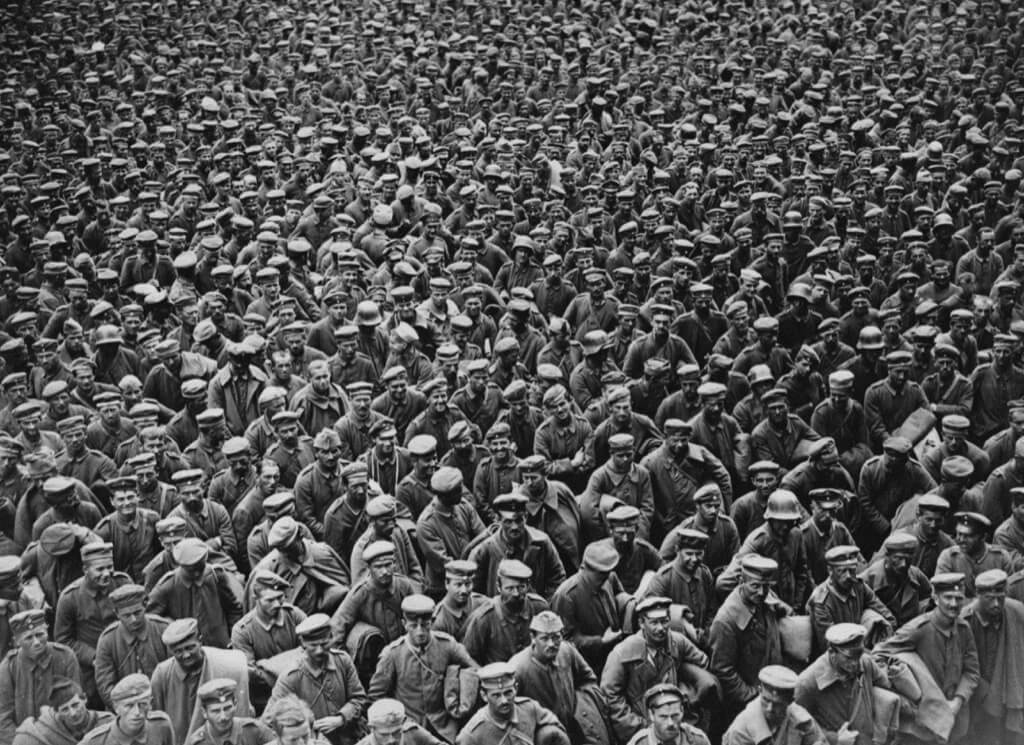- A Global Filming Guide: Do’s, Don’ts, and Must-Knows - February 14, 2024
- Low-Income Americans’ Surprising Spending Habit - December 4, 2023
- France’s Startling Act of Aggression - December 1, 2023
When it comes to determining the size of a crowd at a massive event, be it a political rally or a protest, one might assume that it’s an almost impossible task to achieve any level of accuracy. However, with some fundamental knowledge and the right tools, estimating crowd size becomes a more manageable endeavor. In this article, we’ll explore the Jacobs approach, named after Herbert Jacobs, who developed this method during his time as a journalism professor at the University of California, Berkeley, in the 1960s. We’ll delve into how this approach works and how technology has further refined crowd estimation. We’ll also uncover instances where crowd estimates have been manipulated for various reasons.
Herbert Jacobs, a seasoned journalist who had worked for the Milwaukee Journal for several decades, stumbled upon the idea of crowd estimation while observing demonstrations against the Vietnam War from his office window. He noticed that the crowd seemed to be organized in a grid-like layout, which sparked his curiosity.
Jacobs began to calculate the number of individuals who could occupy a specific area of this grid by assessing the average space each person seemed to occupy. What he discovered was fascinating. In densely packed crowds, the average space per individual was around 2.5 square feet, often referred to as “mosh-pit density.” Beyond this density, the risk of trampling or other safety hazards increased significantly. In moderately packed crowds, individuals had about 4.5 square feet each, while sparsely packed crowds allowed a generous 10 square feet per person. This trend held true even in crowds that were both dense and manageable.
Armed with these observations, Jacobs had a simple but effective method for estimating crowd size. By calculating the average number of students in each grid, he could determine the number of grids occupied at a particular density and arrive at a fairly accurate estimate of the crowd’s size. This method, known as the Jacobs Approach, has since become the gold standard in crowd estimation.
While the Jacobs Approach might sound simplistic, it is surprisingly accurate when carried out by objective observers. In recent years, technological advancements have made the process even more straightforward. Tools like Google Earth provide precise measurements of locations and allow for the easy division of an area into grids, a task that was once considered challenging. Furthermore, in today’s media-saturated world, there is usually an abundance of video and photographic footage from large events, making it easier to analyze and estimate crowd sizes.
One could theoretically take a photograph of an entire crowd and use custom image processing software to count individuals for a more precise estimate. However, the level of accuracy gained from this method, compared to the Jacobs Approach when executed correctly, is often marginal and unnecessary for most purposes.
Manipulation of Crowd Estimates
In the realm of crowd estimation, it’s not uncommon for news media or event organizers to occasionally manipulate figures. One notable example is the Million Man March of 1995, attended primarily by African American men. The event’s organizers claimed that at least one million men participated, with some estimations going as high as two million. This lofty claim is evident from the event’s name. However, the National Park Service (NPS) offered a significantly lower estimate of approximately 400,000 attendees, still a substantial number by any measure.
The discrepancy in estimates led to a heated controversy, with Louis Farrakhan, a key figure in the march, vowing to file a lawsuit against the NPS. In response, Congress prohibited the NPS from publicly estimating crowd sizes in Washington, though they would still provide statistics if requested by the President. This decision stemmed directly from the contentious Million Man March aftermath, and the NPS would no longer disclose such information to the media, which could easily generate its own estimates.
While determining the exact number of participants in the Million Man March remains challenging, most academics tend to support the National Park Service’s initial estimate as quite accurate. In 2004, a group of academics, including Clark McPhail and John D. McCarthy, conducted an analysis based on the event’s location and the assumption that every inch of the crowd would be densely packed at 2.5 square feet per person. They concluded that the NPS’s estimate of approximately 400,000 was realistic, especially when considering available photographs of the event.
Police Expertise in Crowd Management
The police and other law enforcement agencies are typically the primary authorities responsible for crowd management and safety during large events. This responsibility gives them a unique advantage in estimating crowd sizes. They are intimately familiar with the gathering spaces, having often documented them extensively for emergency planning purposes. Law enforcement agencies use their knowledge to make precise predictions about crowd size, ensuring that they can adequately allocate resources and respond to any potential incidents. Their primary goal is safety and security, which means that exaggerating crowd estimates serves no practical purpose for them.
Event organizers have a vested interest in portraying their gatherings as successful and impactful. This vested interest can lead to discrepancies in crowd estimates, with organizers often reporting higher numbers than what law enforcement agencies suggest. The motivations behind this exaggeration can vary. In some cases, organizers want to garner more attention for their cause or event, believing that a larger crowd will attract more media coverage and public support. Additionally, inflated crowd estimates can contribute to a sense of accomplishment and enthusiasm among event participants, reinforcing the event’s significance in their eyes.
The media’s role in amplifying crowd size claims cannot be underestimated. When event organizers provide inflated figures, some media outlets may accept these numbers at face value or even embellish them further to create a more captivating story. This process can lead to a cycle of misinformation, with inflated estimates becoming widely accepted, even if they do not align with more accurate law enforcement assessments. Media organizations may prioritize sensationalism to attract viewership, inadvertently contributing to the public’s perception of crowd size.
The way crowd sizes are estimated and reported can have significant political implications. Large gatherings, such as political rallies or protests, are often seen as indicators of public support or dissent. Therefore, the reported size of these gatherings can influence public opinion and even impact policy decisions. When event organizers and the media inflate crowd estimates, it can create a distorted image of public sentiment. This, in turn, can shape the narrative surrounding an event, potentially influencing the way it is covered and discussed in the media and within political circles.
Crowd estimation is a delicate balance between objectivity and public relations. While law enforcement agencies aim for accuracy to ensure safety, event organizers and the media may be driven by different motives. It is essential for the public to be aware of potential discrepancies in crowd size reporting and consider multiple sources when assessing the true magnitude of an event. In an era of widespread information dissemination, critical thinking and fact-checking play a crucial role in deciphering the true impact of large gatherings on society and politics.
Maintaining Objectivity in Crowd Estimation
Despite instances of crowd size manipulation, there exists a straightforward and unbiased method to accurately estimate crowd size. In today’s digital age, anyone can accomplish this, even from the comfort of their own home, halfway across the world from the event’s location – an astonishing feat indeed.
Crowd estimation, though seemingly complex, relies on well-established methods like the Jacobs Approach. Technological advancements have only made this process more accessible and accurate. However, it’s crucial to remain aware of potential manipulation in crowd estimates, as these numbers often carry significant social and political implications. As we continue to explore and understand the science behind crowd estimation, we gain valuable insights into the dynamics of human gatherings and their impact on society.

